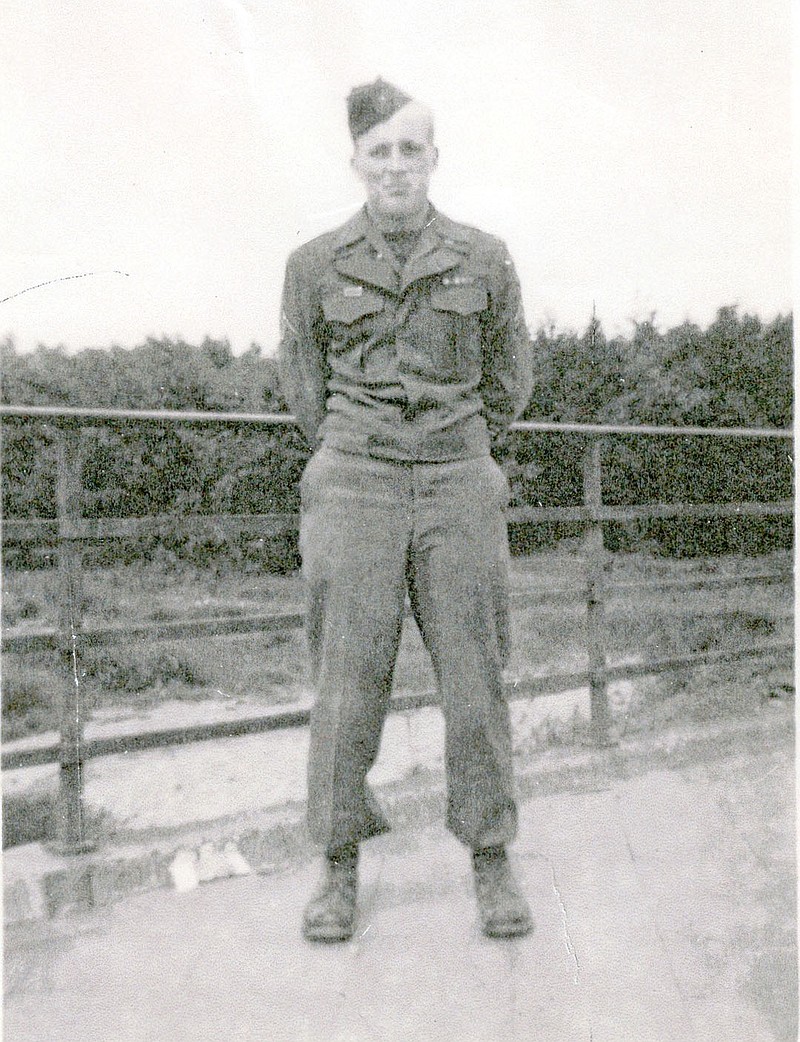Through blood curdling explosions, the ground shaking and clouds of flying metal they kept moving forward. It was June 6, 1944, on Omaha Beach at Normandy.
Staff Sergeant Andy Anderson and his 348th Army Corps of Engineers were among the first in a combat role to set foot on European soil.
More veterans’ stories are on Page 1B of this issue of The Weekly Vista.
Fast Facts
• Parade is July 4
• Begins at 9;30 a.m.
• Sugar Creek Shopping Center
• 10th year for the event
• WWII veteran Andy Anderson is parade marshal
As a thank you for his service to the United States, and to honor our past and present military personnel, SSgt. Anderson, who lives in Bella Vista, is parade marshal of this year's 4th of July Patriot Parade in Bella Vista. The parade begins at 9:30 a.m. July 4 in the parking lot of Sugar Creek Shopping Center. This is the 10th year for the annual event.
The parade is now the biggest and best parade in Arkansas, according to event founder Jim Parsons.
"One of the main reasons we put on the parade is to showcase our World War II veterans while we still can," Parsons said. "Each year we select a WW II veteran to be our parade marshal.
When soldiers hit the beach on that June morning, the Germans were in fixed positions with preplanned fields of fire. SSgt. Anderson said his job was to set up his .30 caliber machine gun to counter the enemy fire. The machine guns and tripods were heavy and hard to set up in the watery sand. The American plan was that the enemy small arms' fire should be squelched in about an hour, but he said it continued on for approximately six more hours. SSgt. Anderson repeated what so many veterans of World War II said about one of the most horrifying sounds -- the screeching noise of artillery rounds. With that sound you knew the shell was going to explode somewhere near.
After surviving Normandy, Anderson and his combat engineers were ordered to stay on the beach to receive incoming supplies and equipment. The delay amounted to his group not having to crawl their way through the merciless hedgerows of the Ardennes. They traveled by truck to a bivouac area near Trooz just south of Bastogne.
After all the arduous times SSgt. Anderson and his group had been through, Bastogne and the surrounding area was supposed to be a place of rest and relaxation. However, Hitler had ordered his troops to make a surprise attack to get to the American supply dumps at the seaport of Antwerp. The German troops were woefully short on gasoline, food and almost all other materials. Hitler's tank battalions had just enough gas to get to the supply dumps and he was not expecting to get held up at Bastogne. But they were in a fight that became known as the Battle of the Bulge.
German General Hasso von Mantenffel asked American Brigadier General Anthony C. McAuliffe to surrender and our general gave his famous one-word response, "Nuts." The German general had to go back to his headquarters to try to figure out what the heck "Nuts" meant, but he soon found out. The Americans kept fighting. The German tanks ran out of fuel and Hitler's plans collapsed. The Battle of the Bulge was over.
After defeating the Germans in the Battle of the Bulge, SSgt. Anderson and his group marched on toward Berlin, but Anderson said the resistance put up by the enemy was much less, but there were still casualties.
Finally, on April 25, 1945, Anderson's group met head-on with the Russians at the Elbe River Bridge at the town of Torgue. Asked how the meeting went -- because in some cases the Russians captured American soldiers and trucked them to Siberia to use them as slaves -- SSgt. Anderson said the meeting was friendly and one of them came across the bridge and gave him a shot of vodka.
"Talking to SSgt. Anderson, I was curious as to what conditions in America led to the creation of this Greatest Generation," Parsons said. "Many of the veterans that I have interviewed expressed some of the same common traits. Andy's father was a hard-working coal miner. His mother was a nurturing stay-at-home mom. He had a high school sweetheart, Bonnie, whom he married when he got back home in 1946. Andy Anderson was a hard worker before the war, during the war and after the war."
General News on 06/21/2017
